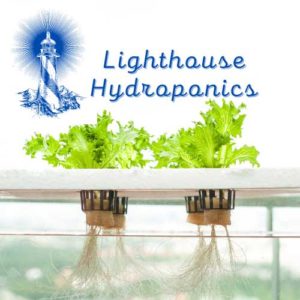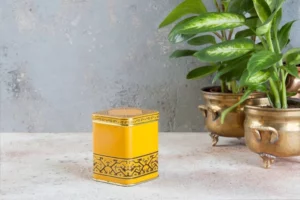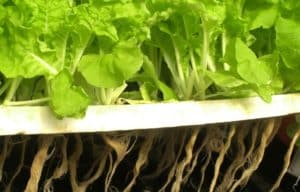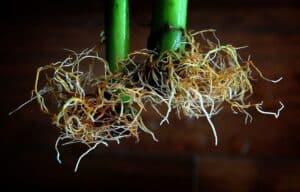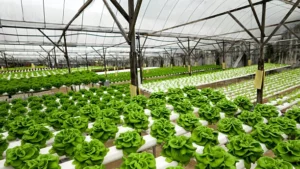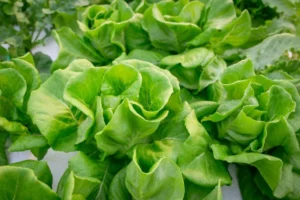Before we dive deep into the fascinating world of Hydroponics – and it is fascinating! – I want to start with the very fundamental information and then go further from there.
So What Exactly is Hydroponics?
In a nutshell, hydroponics is a technique used to grow plants without soil. It uses only water alongside a nutrient solution and a medium necessary for holding the place in place. It helps grow plants directly in nutrient-rich water.
I have learned that plants do not need soil to grow. However, they require vitamins and minerals, water, oxygen at the root zone, carbon dioxide, and light. In hydroponics, crops can grow in a medium like a coco fiber pr rocks and feed a solution that contains a primary, secondary, and micro-nutrient mix.
When it comes to hydroponics, I have encountered several approaches to designing a hydroponic system. However, all the essential core elements are the same, including:
Fresh Water
I am talking about filtered water with a balanced pH level of around 6 to 6.5. Adjusting the water acidity is very easy by using over-the-counter solutions at your local garden, hydroponic, or hardware store.
Nutrients
Plants require calcium, phosphorous, magnesium, and other nutrients to keep them healthy and productive. As I grow plants without soil as a medium, I include these essential nutrients to feed my plants. While I can make my own nutrient solution, I also purchase mixtures in stores or online.
Root Support
While soil is not necessary for this technique, plant roots still require at least a little something to hold on to. In most cases, I use materials such as rock wool, coconut fiber, peat moss, perlite, and vermiculite. Materials like sand that might compact or gravel that do not hold moisture are not ideal for hydroponics.
Oxygen
I either oxygenate the container with an air stone or air pump installation or leave space between the plant’s base and the water reservoir, depending on the hydroponic setup.
Light
If I prefer growing plants indoors, I ensure to invest in special lighting. However, beware that each plant has unique requirements with regard to the amount of light. In addition, each plant type has a unique light placement requirement.
What is the Purpose of Hydroponics?
If you are looking for an environmentally sound method to grow plants, hydroponics is the answer. While most hydroponically-raised plants need proper care in controlled conditions, plants are fed with well-balanced, assorted nutrients.
Using the hydroponic technique to raise plants allows many gardeners to increase the crop yield in a single harvest. In traditional farming, they might only produce a regular amount of crop harvest. However, in hydroponic gardening, they can double or even triple the crop production.
With this gardening technique, you can grow plants in often impossible areas due to the absence of soil. For example, if you live in an area with poor soil or rocky, you can still raise plants. You can also pursue gardening even if you need the available space on the rooftop or balcony.
Other gardeners and I prefer hydroponics because of its interesting purposes. It helps us grow plants up to 50% faster because plants can easily access water and food than in soil. I have also discovered that produce through this method often contains more nutrients than those in the conventional gardening method. Additionally, I have noticed that hydroponically grown fruits and vegetables offer more flavors and improved texture.
If you grow plants in a hydroponic setup, plants easily develop resistance to diseases and pests. You can even use small containers since the plant’s roots can grow even with no root-bound. Besides not competing for nutrients, you can also produce many plants in a small area.
Hydroponics requires less labor than growing plants in soil. That is because no weeding or digging is required. With increased control over the growing conditions, you can provide plants with the best possible environment. In return, you will have higher yields and better-quality produce.
What is the Process of Hydroponics?
The use of hydroponics for growing plants relies on growing mediums and nutrient solutions instead of soil and fertilizer. For a high essential nutrient concentration, nutrient solutions are mixed with water. Then, the water is delivered to the plants, replacing the food they get from the soil.
The primary purpose of hydroponic systems is to make it easier for the plant’s roots to soak up the water, nutrients, and oxygen to ensure healthy and robust growth. In hydroponic systems, growing mediums and nutrient solutions are used. This ensures that nutrient-rich water is directly delivered to the roots.
Growing plants in hydroponic systems mean saving water, time, and space. This method of growing plants may use water as the primary nutrition source, but the amount is only less of it. Besides providing water directly to the roots, water in the soil-less system is reusable.
Why is Hydroponics Considered Bad by Some People?
Not all people are convinced to take advantage of soil-less systems like hydroponics. Some people consider it bad due to several drawbacks.
What Are The Disadvantages of Hydroponics?
For me, it is very easy to show you the advantages of hydroponics. However, you need to know that disadvantages also exist. Below are some of them that you should know to help you decide whether the technique is applicable to your gardening needs:
Costly to Set Up
Unlike traditional garden setups, hydroponic systems are expensive to build. The system’s type and size are two contributing factors to the cost range. Another factor is whether the system is built with individual components or prefabricated to create a custom design.
Waterborne Diseases
Yes, hydroponically grown plants have resistance to different diseases that are common to conventionally raised plants. However, it does not necessarily mean that they are already free from other diseases.
Waterborne diseases have higher cases in hydroponically grown crops. That is because water constantly circulates through the system, which spreads infections more quickly. The diseases can kill plants in the system in a matter of hours.
Constant Maintenance and Monitoring
Unlike growing plants traditionally, plants growing through hydroponics require constant maintenance and monitoring. System components such as temperatures, lights, electrical conductivity, and pH need constant vigilance to keep a carefully controlled environment. Additionally, nutrient solutions must be replaced regularly while system parts are cleaned to avoid clogging or buildup.
Nutrient Deficiencies
Soil helps protect the plant’s roots against extreme temperature changes and slow pests and diseases from attacking. It also releases and absorbs nutrients. So, absence of it, nothing will act as a buffer. As a result, plants will react negatively to issues like disease and nutrient deficiencies much more quicker.
What are the Advantages of Hydroponics?
Hydroponics may sound like a complex method, but it offers many benefits to gardeners, including:
Improved Plant Growth and Yield
With hydroponic systems, you can expect faster-growing and higher-yielding crops, thanks to a nutrient solution that provides increased oxygen levels. These oxygen levels stimulate root growth while improving nutrient uptake. The carefully controlled environment also contributes to this improved growth and yield.
Less Water Consumption
A hydroponic system depends on water to grow plants, but it only uses 80 to 90% less water than the traditional method. As you know, growing plants in the soil require a large amount of water so that an adequate amount of moisture will reach the root zone. Then, the water evaporates, and only a few percent reaches the roots.
On the other hand, in hydroponics, the water reaches the roots immediately, and only a few percent is lost to evaporation. In addition, most systems allow nutrient solutions to recirculate several times before becoming discarded. This improves water efficiency.
Extended Growing Season
During cold climates, plants are exposed to chilly temperatures and shorter day lengths. These things negatively impact their growth process. However, plants grow year-round with hydroponics systems since you can control the nutrient supply, light, and temperature.
Higher Plant Density
When growing plants in the solid, you have to follow strict spacing guidelines. That way, each will have equal access to the limited water and nutrient supply of the soil. With hydroponics, plants grow closer together without competing for root space, especially since more nutrients are delivered to the root zone.
Plants Grow Anywhere
If you choose to grow plants traditionally, you need to find enough outdoor space to ensure they grow healthily and become productive. However, if you live in an area with limited space, you cannot grow plants in the soil easily. With hydroponics, growing plants anywhere is possible.
Easier to Harvest Plants
Hydroponics allows you to grow plants on tables, benches, counters, and more. This enables you to reach the plants with ease. Once the plants become mature, you can harvest them effortlessly since you do not need to kneel or bend down to reach the plants. For growers with physical ailments or limited mobility, this method helps them grow plants even not at ground level.
Less Work
Hydroponics provides a lighter load for growers because they do not need to till, weed, apply insecticide, and do other labor-intensive tasks. That way, you can focus on other critical aspects of gardening.
What are the Different Types of Hydroponics?
No doubt, hydroponics continues to become a popular method to grow plants nowadays. However, as you get interested in this method, you also need to become familiar with the different hydroponic systems.
Let me share with you what are these hydroponic types.
Water Culture
With a water culture system, a medium often made of Styrofoam holds the plants. It floats directly on the nutrient solution. An air pump is installed to supply air to the air stone bubbling the nutrient solution. It also helps supply oxygen to the plant’s roots.
Wick System
No moving parts are involved in Wick System, making it the simplest hydroponic system type. It uses various mediums, such as coconut fiber, Pro-mix, vermiculite, perlite, and more. The nutrient solution is dipped into the desired growing medium from the water source with a wick.
Drip Systems (Recovery/Non-Recovery)
The operation in drip systems is simple, where a timer is controlling the submerged pump. Then, the nutrient solution is drawn onto each plant’s base through the small drip line.
Meanwhile, the Recovery Drip System involves the use of excess nutrient solution running off and collected in the reservoir for re-use. As for the Non-Recovery Drip System, it has nothing to do with the collection of the runoff.
Nutrient Film Technique (NFT)
The NFT system works through continuous nutrient solution flow, and the nutrient solution is pumped into a tube or the growing tray. Then, it will flow over the plant’s roots and drain back into the water source.
EBB and Flow (Flood and Drain)
With the EBB and Flow system, the growing tray is temporarily flooded with the nutrient solution and drains the solution back into the reservoir. A submerged pump is connected to the timer, which turns on the pump.
Aeroponic
This hydroponic system is the most advanced one.
The plant’s roots are hung in the air. Then, they also require misting with the nutrient solution every few minutes. Then, just like other hydroponic systems, a timer is installed to control the pump.
Conclusion
There you have it! I hope that the above ideas helped you get more familiar with hydroponics and even discover something new to apply to your gardening techniques. With hydroponics, you can choose which system type suits your gardening needs best. Happy gardening!
